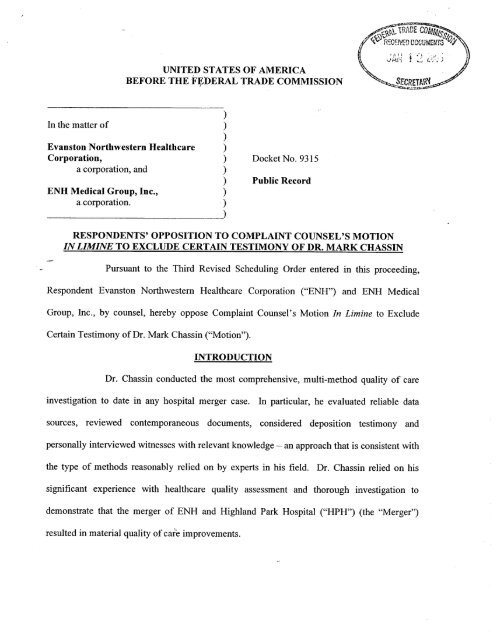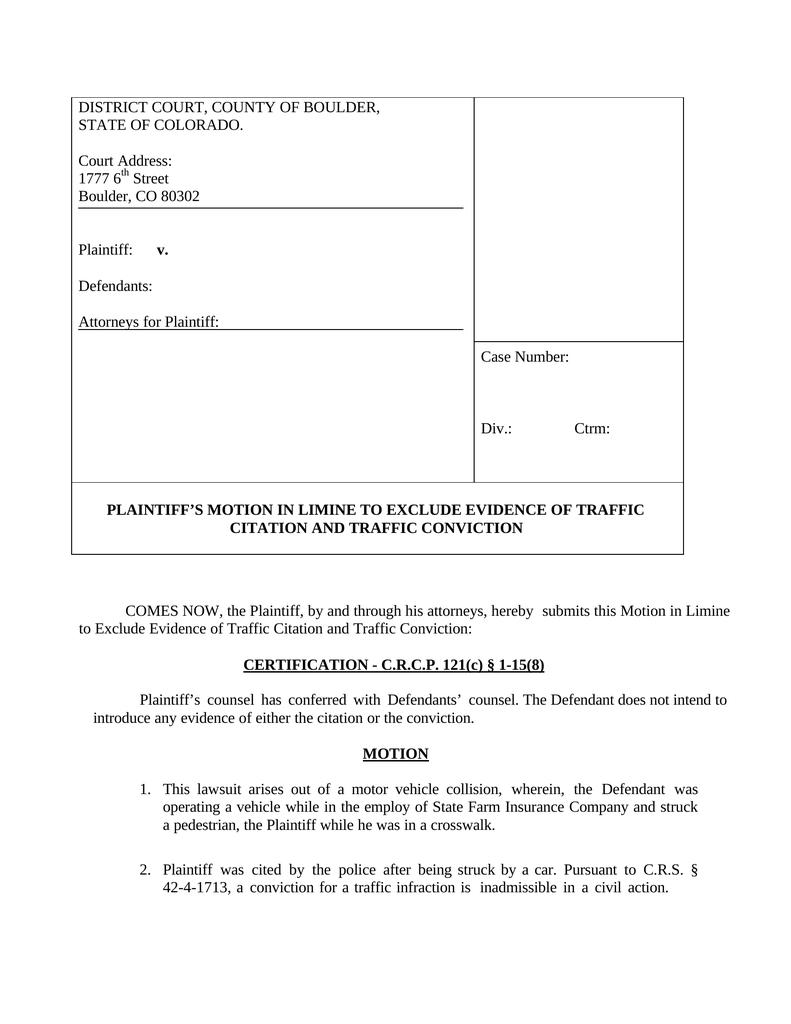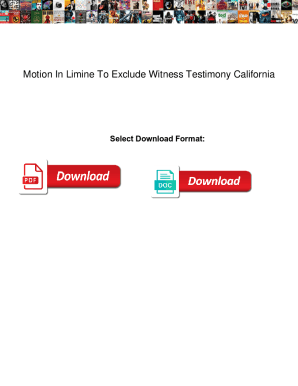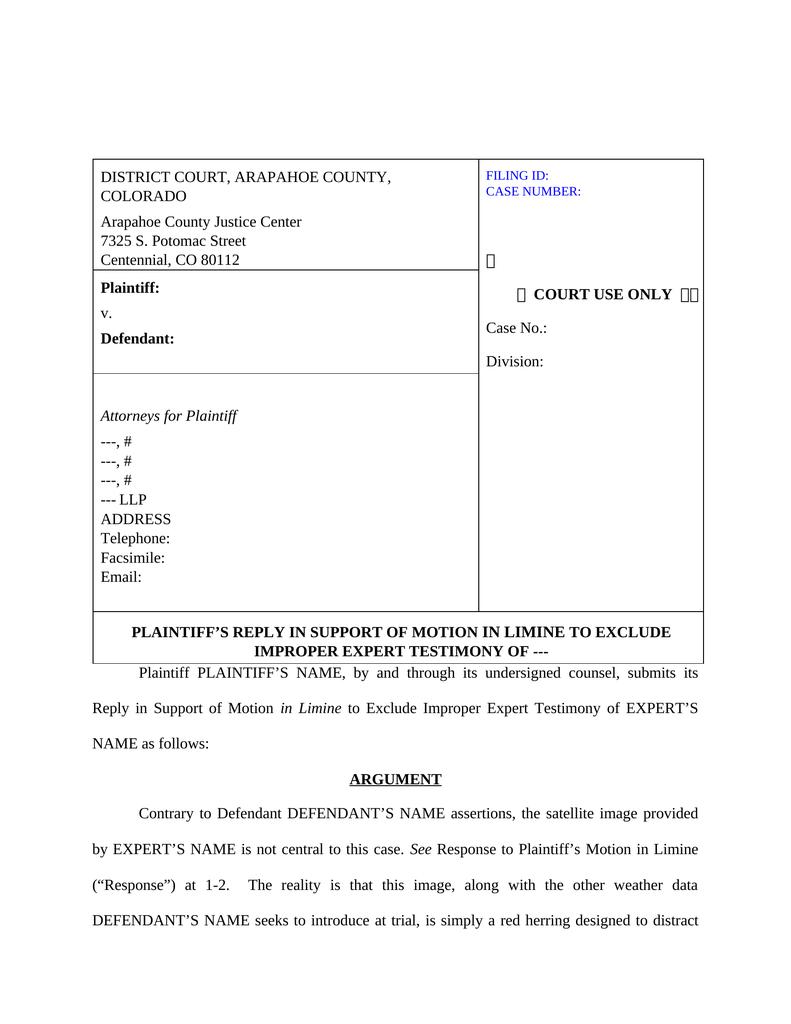
Whether it has attracted widespread acceptance within a relevant scientific community. The existence and maintenance of standards controlling its operation. Whether it has been subjected to peer review and publication. Whether the theory or technique in question can be and has been tested. The daubert guidelines consist of five factors of consideration: Under the Daubert standard, the court provided guidelines for determining whether an expert’s methodology is valid. In 1993, the Supreme Court set the standard for expert testimony admissibility in the seminal case, Daubert v. the Frye Standard 5 | The Daubert Challenge 6 | The Daubert Motion 7 | The Daubert Hearing 8 | The Daubert Rulingġ) The Daubert Standard For Expert Testimony #Motion in limine to exclude witness testimony how to
Failure to comply with the Daubert standard can result in exclusion of an expert’s testimony.ĭue to the enormous consequences a Daubert challenge can have, it is important for any practicing trial attorney to understand how to execute a Daubert challenge, when to do so, and strategies relating to the execution of such a challenge.Ĭhapters 1 | The Daubert Standard For Expert Testimony 2 | The History of the Daubert Standard 3 | Admissibility of Scientific Evidence Under the Daubert Standard 4 | The Daubert Standard vs.

As such, trial judges employ a Daubert test to assess whether an expert witness’ testimony is 1) based on scientifically valid reasoning and 2) whether it has been properly applied to the facts at issue.
There was a Late/Incomplete Disclosure: A witness may be barred from testifying if the witness was not disclosed in a timely fashion, or if the witness plans on testifying about matters not identified in responses to discovery requests.Under the Daubert standard, the trial judge serves as the gatekeeper who determines whether an expert’s evidence is deemed reputable and relevant. Other examples include privileged information improperly obtained by an employee and evidence obtained through inspections conducted without notification to the opposing counsel. Evidence was Improperly Obtained: Criminal trials are not the only situation where improperly obtained evidence may be excluded. Lay witnesses that did not actually see a particular event may not be competent to testify (IRE 602) Additionally, testimony of mentally incompetent witnesses and testimony subject to exclusionary statutes such as the Dead Man’s Statute may be challenged. Examples include physicians not familiar with the applicable standard of care and engineers not qualified in a particular field. Witness is not Competent: The competency of expert and lay witnesses may be challenged. Among other reasons, cumulative evidence may be excluded to avoid the needless waste of time (IRE 611(a)). The court has wide latitude in making the determination as to what is, or is not, cumulative testimony. Evidence is Cumulative: Cumulative or repetitive evidence may be excluded (IRE 403). Evidence of religious beliefs may be inadmissible (IRE 610). Some evidence, such as prior criminal convictions over ten years old, may be excluded as prejudicial by applicable rules of evidence (IRE 609(b)). As an example, relevant photographs of an accident may be so gory they become prejudicial and should be excluded. Evidence is Prejudicial: Information that is relevant, but unduly prejudicial, may be excluded (IRE 403). As an example, is it relevant if a defendant is wealthier than the plaintiff? Is it relevant if a physician failed his first attempt to become Board Certified twenty years ago? 
Counsel will often attempt to introduce irrelevant evidence to create sympathy or prejudice among the jury.

Evidence is Irrelevant: Irrelevant evidence may be precluded from presentation to the jury (IRE 402).

Grounds for granting a motion in limine include: Multiple evidentiary issues may be addressed by motions in limine.








 0 kommentar(er)
0 kommentar(er)
